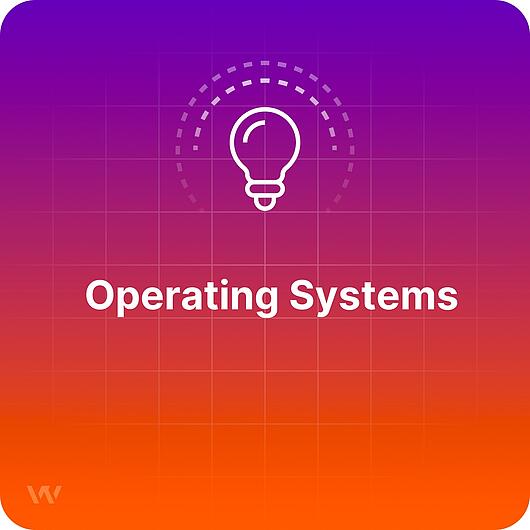- Why Us?
- Features
White Label
For SaaS Platforms & Agencies
Provide our complete analytics suite to your clients, directly within your own interface and with your/their own branding. Discover Analytics-as-a-Service and White Label Analytics. Great benefit, minimal effort.
- Pricing
- White Label
- Success Stories
- ResourcesGetting Started
Operating Systems

TL;DR
An operating system is software that manages both hardware and software resources and provides the environment for applications and programs to run on devices. There are multiple operating systems and each of them functions a bit differently.
About Operating Systems
An operating system or OS for short is software that allows users to run apps on computing devices. The OS communicates with hardware resources including keyboards, mice, monitors, printers, routers, monitors, external and internal drives and more.
Every desktop, laptop, smartphone, and tablet includes an OS that ensures the basic functionality of the device.
The Operating Systems feature can be found in the Devices Menu, and its purpose is to help out website owners strategize about UI/UX.
How do operating systems work?
An operating system consists of multiple interconnected features and components, but the most well-known are:
- The Kernel, which handles data and provides a fundamental level of control by connecting the software to the hardware
- The User Interface (or shell), which represents the digital space where the human-machine interaction occurs
- The Application Programming Interfaces (API) or the component which allows developers to write modular code
When creating applications, software developers must always take into consideration the fact that each OS communicates differently with the hardware and has a specific API, therefore the code must be written accordingly.
Why are operating systems important?
Operating systems facilitate the use of devices by providing the ability to manage files, folders, applications, and programs.
Since there are multiple options on the market, each user’s preferences depend mostly on the graphical interface and usability of an OS.
Sometimes, the type of hardware can limit the choice of operating systems. For example, Windows is installable on any standard PC hardware, while macOS X is intended to run only on Apple.
What are the most popular operating systems?
There are dedicated operating systems for PC and mobile devices and the most popular are the following, in no particular order:
Windows
Linux
macOS
iOS
Android
About Operating Systems
An operating system or OS for short is software that allows users to run apps on computing devices. The OS communicates with hardware resources including keyboards, mice, monitors, printers, routers, monitors, external and internal drives and more.
Every desktop, laptop, smartphone, and tablet includes an OS that ensures the basic functionality of the device.
The Operating Systems feature can be found in the Devices Menu, and its purpose is to help out website owners strategize about UI/UX.
How do operating systems work?
An operating system consists of multiple interconnected features and components, but the most well-known are:
- The Kernel, which handles data and provides a fundamental level of control by connecting the software to the hardware
- The User Interface (or shell), which represents the digital space where the human-machine interaction occurs
- The Application Programming Interfaces (API) or the component which allows developers to write modular code
When creating applications, software developers must always take into consideration the fact that each OS communicates differently with the hardware and has a specific API, therefore the code must be written accordingly.
Why are operating systems important?
Operating systems facilitate the use of devices by providing the ability to manage files, folders, applications, and programs.
Since there are multiple options on the market, each user’s preferences depend mostly on the graphical interface and usability of an OS.
Sometimes, the type of hardware can limit the choice of operating systems. For example, Windows is installable on any standard PC hardware, while macOS X is intended to run only on Apple.
What are the most popular operating systems?
There are dedicated operating systems for PC and mobile devices and the most popular are the following, in no particular order:
Windows
Linux
macOS
iOS
Android

